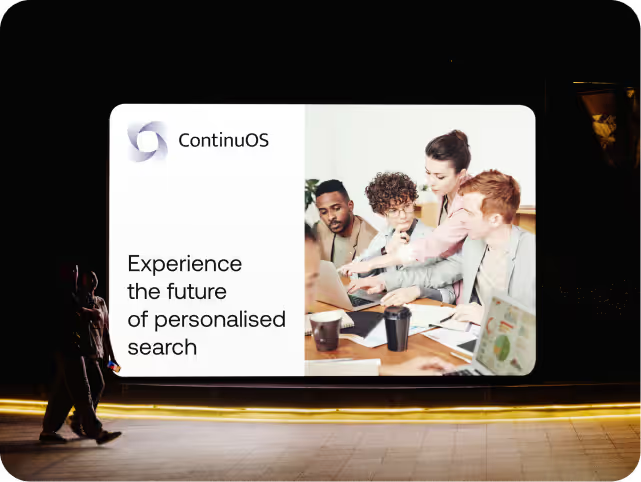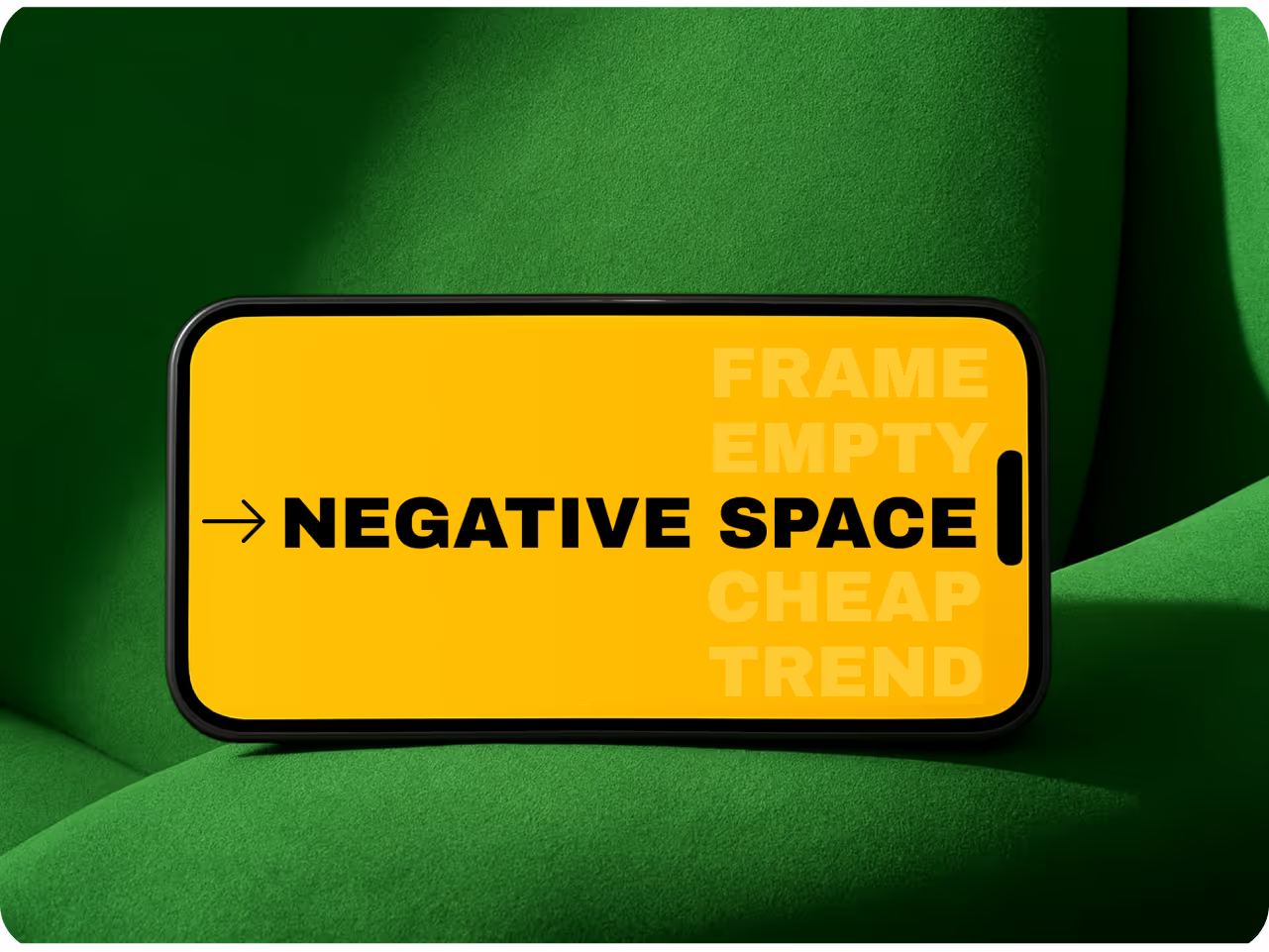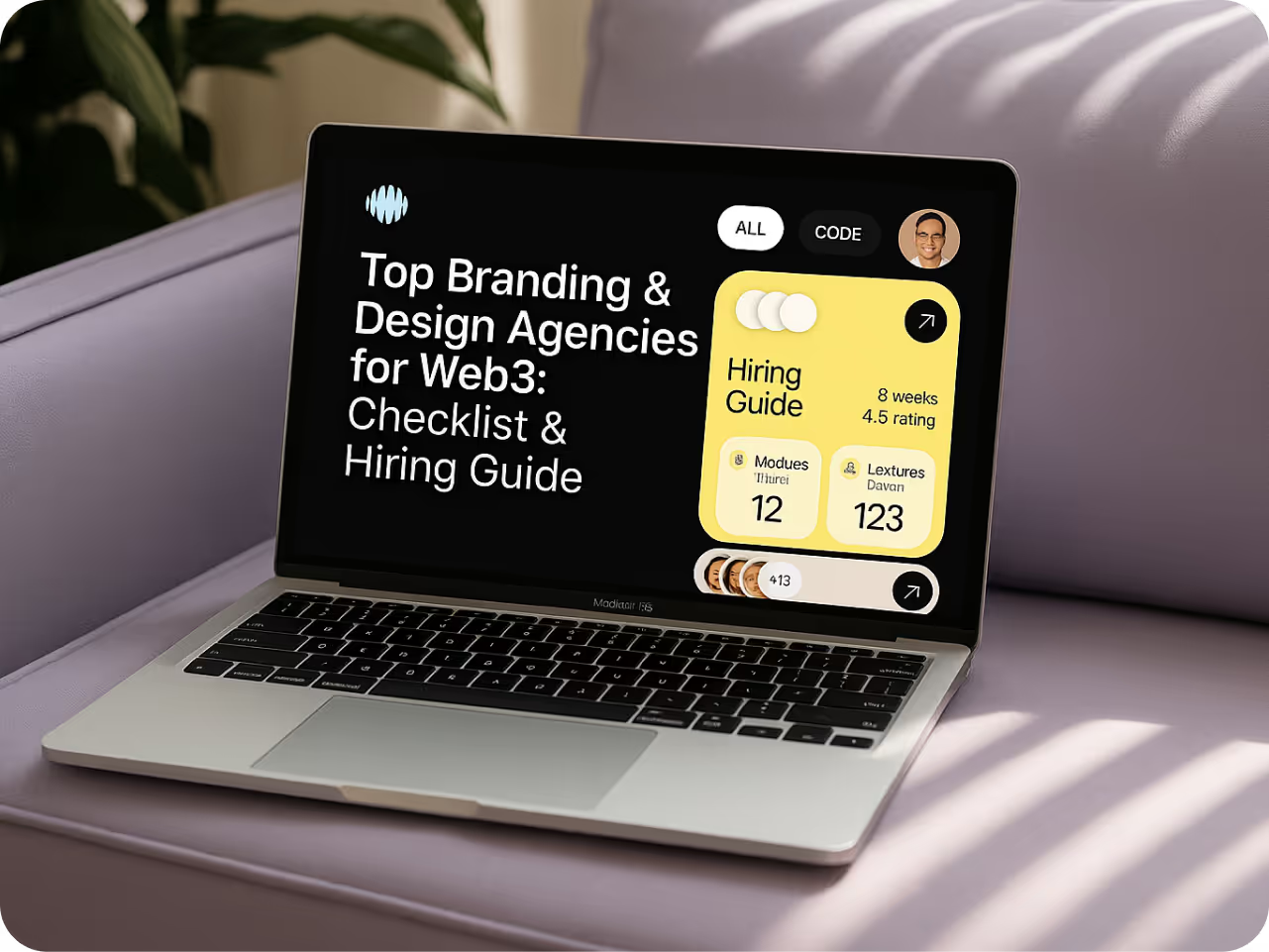Brand Identity for AI-Driven Startups: How to Build Trust with Strategy, Story & Design

You’re not just launching a product. You’re introducing a new way of thinking.
That’s the unspoken truth behind most AI startups.
You’ve built something powerful — something smart enough to disrupt the way things work. But intelligence alone doesn’t convince. It doesn’t win people over, earn trust, or make someone say “I get it. I want this.”
That’s where brand identity comes in.
Because if your startup leads with complexity, you’ll lose people before they’ve even tried what you’ve built. What they need is clarity. Confidence. A sense that behind all the data and automation, there’s a purpose they can understand — and a product they can believe in.
At Eloqwnt, we’ve helped AI, Web3, and deep tech startups craft identities that don’t just look good — they resonate. Identities that bridge the gap between logic and emotion, innovation and trust.
And in this guide, we’re sharing exactly how that’s done.
You’ll learn:
- Why AI startups need a different kind of brand
- How to define strategy before jumping into design
- How voice, story, and visuals create trust
- And how to systematize your identity across every touchpoint
Let’s begin — not with what your brand looks like, but what it stands for.
Why AI Startups Need a Different Brand Approach
(And why default branding won’t cut it)
AI startups don’t sell features — they sell trust in the invisible.
Think about it. You’re asking users to hand over decisions, predictions, and patterns to a system they’ll never fully see. Unlike physical products or traditional SaaS, AI is often abstract. The real value lives under the surface — in algorithms, data loops, and probabilistic outcomes.
That makes brand identity more than aesthetics. It’s the bridge between what you’ve built and how people feel about it.
In our work with emerging AI brands — from medtech to predictive analytics — we’ve seen this play out time and again: the companies that succeed early don’t just explain what their product does.
They give it a personality. A promise. A posture.

Without that? You’re just another startup saying, “Our model is 12% more accurate.”
And the truth is — that rarely moves people.
People don’t remember models. They remember meaning – and great branding gives AI meaning people can act on.
That’s why we often tell founders: branding isn’t a coat of paint — it’s infrastructure. We broke this down in detail, with supporting data, here → “The Impact of Visual Identity on Business Growth”. Give it a read if you’re still seeing brand as surface-level.
But to wrap it for now: your AI startup needs a different branding playbook — one grounded in strategy first, not decoration.
How to Define the Strategic Foundation for Your AI Brand
(Before you touch a logo, color palette, or website layout)
Every strong brand starts long before the design process. For AI startups, this foundation is even more critical — because you’re not just designing a look; you’re building clarity around something abstract, technical, and often misunderstood.
That means your brand strategy can’t be an afterthought. It needs to answer 3 key questions — and answer them with precision:
1. What Exactly Are You Promising?
Most AI startups can explain what their product does. Far fewer can articulate what it promises — and that’s the real foundation of a brand.
• Is your product helping users save time, avoid mistakes, or discover hidden insights?
• Is it augmenting their decision-making — or replacing it entirely?
• Does it give people more control, or reduce the burden of choice?

When we worked with Incipet, a predictive AI platform for dog health, this distinction shaped the entire identity. The product’s tech was advanced — early diagnosis, environmental risk scanning, behavioral pattern tracking. But the real promise wasn’t just in the data.
It was in what that data meant for the human on the other end: Peace of mind, backed by precision.
Not “pet health analytics.”
Not “AI-powered insights.”
But the feeling of doing the right thing — before symptoms show up, before things get worse, before doubt creeps in.
That emotional clarity is what separates strong AI brands from forgettable ones. And it starts with writing a promise you’d actually want to hear if you were your own customer.
Pro tip: Write your core brand promise in one sentence — with zero buzzwords. If it sounds like a tagline, keep refining. If it feels like a real benefit your customer would want — you’re getting closer.
2. Who Are You Really Talking To?
And no, “early adopters” isn’t enough.
In AI, your audience could include:
• End users who are skeptical of automation
• Enterprise buyers who need regulatory assurance
• Technical teams looking to integrate your API
• Investors who want to understand market differentiation
Each of these audiences needs a slightly different story — but all stories must stem from the same brand truth.
That’s why we always recommend building personas with emotional context, not just demographic data.
Because clarity isn’t just about who your audience is — it’s about what they fear, what they hope for, and why your brand is the one that gets them there.
3. What Makes You Meaningfully Different?
In AI, it’s not enough to be better — you need to be believably better.
Your edge might be:
- A novel algorithm (but only if you explain what it enables, not how it works)
- A more ethical or transparent model
- A specific vertical focus with real-world case studies
But too often, founders fall back on technical superiority — which doesn’t land unless it’s wrapped in relevance.
Strategic branding connects your differentiator to something your audience values:
- More peace of mind.
- Less guesswork.
- Faster insights.
- A competitive advantage.
So instead of saying, “We use federated learning with privacy-first architecture,” say:
“You get insights without ever giving up your data.”
Once you define these foundations, document them. Share them. Bake them into your pitch decks, onboarding guides, and product roadmap.
Because branding isn’t just an outward-facing exercise. It’s how you align your team around what matters — especially as your startup scales and complexity grows.
Strategic Expression: Turning Trust into Voice, Story & Design
A strategy only works if people can feel it.
For AI startups, this means transforming technical brilliance into emotional resonance — and building a brand that speaks to humans, not just systems. The product may live in the world of probabilities and models, but your brand expression needs to connect on a human level.
So how do you do that? We break it down into three parts: voice, story, and visual identity.
1. Voice: Make the Machine Feel Human
Brand voice isn’t about sounding trendy — it’s about sounding intentional.
AI products often default to being either overly clinical or overly vague. But voice is one of the most powerful ways to bridge the gap between complexity and clarity.
Your tone needs to reflect two key ideas:
- Competence: You know what you’re doing.
- Clarity: You’re not hiding behind buzzwords.

At Eloqwnt, we often craft voice systems with sliders:
– Formal ↔ Conversational
– Analytical ↔ Empathetic
– Confident ↔ Humble
This lets the brand flex between investor decks, UI copy, and social media — without losing consistency.
TIP: Start by defining three tone principles that capture how your brand should feel in conversation — for example, “clear,” “informed,” and “optimistic.” Then test them in context.
Rewrite a homepage headline, an onboarding tooltip, or an investor slide using those tones. Do they hold up? Do they feel consistent? The goal isn’t just to describe your voice — it’s to see if it works where it matters.
2. Story: Turn Complexity into Meaning
Every AI startup has a product story. But what users really want is a people story.
They want to know:
- Why was this built?
- What problem does it solve?
- And what future does it help them step into?
Your story should do more than explain functionality — it should create emotional stakes.
Structure it like this:
- The old world (what users struggle with today)
- The turning point (why this solution was needed)
- The new world (what life looks like with your product in it)
This structure is incredibly effective, especially for emerging tech. Because users aren’t just adopting a tool — they’re buying into a vision.
3. Visual Identity: Design with Meaning, Not Just Aesthetics
Let’s be clear: AI brands don’t need to look “techy” to feel innovative.
Your visual identity should amplify your strategy — not dilute it with clichés like circuit boards, gradients, or sci-fi typefaces (unless they’re grounded in meaning).
Here’s how we approach AI design:
• Color should reflect your posture. Cool tones for trust and logic. Warm tones for human support. Bold tones for disruption.
If you are not sure what fits your positioning – This guide to building a brand color palette breaks it down in five clear steps.
• Typography should mirror your voice. Is it clear and modern? Classic and authoritative? Friendly and open?
• Motion and micro-interactions play a huge role in real-time feedback. For Web3 and AI interfaces, we often design motion as a conversation layer — turning static decisions into fluid steps.
Build the System: Scale Your AI-Brand Across Every Touchpoint
A brand isn’t what you say once — it’s what people experience again and again.
That’s where most early-stage AI startups run into trouble. They craft a great pitch deck. A slick landing page. Maybe a compelling explainer video. But beyond that?
Inconsistent messaging.
Confused visuals.
A Slack tone that doesn’t match the homepage.
And an investor email that sounds like a different company altogether.
This is the gap between branding and brand systems.
Because for a startup that’s growing fast (or planning to), consistency is what powers success and scale. And you can’t scale what you haven’t systematized.
So here’s how we build systems at Eloqwnt that work across product, marketing, ops, and future hires — all without slowing you down:
1. Create a Modular Brand Framework
Forget the rigid “style guide.” What you need is a flexible system that adapts to your startup’s real-world needs.
We typically build this using brand modules, which include:
- Voice modules: Different tones for product vs. marketing vs. investor decks — all aligned to your core principles.
- Visual modules: Color ratios, logo variations, layout types, iconography, micro-interaction styles — all plug-and-play, not static.
- Story modules: The elevator pitch, the investor story, the product story, and the user journey — all using the same core narrative, adjusted for context.

This modularity means you’re not reinventing the brand for every asset. You’re activating it with intent.
2. Design for Growth, Not Just the MVP
A lot of AI startups brand themselves for launch — but not for longevity.
But what happens when you:
- Launch a second product?
- Sell to new markets?
- Shift from B2B to B2C?
- Start hiring at scale?
Your identity needs to be built to stretch.
At Eloqwnt, we plan for this by designing in layers:
- A core brand spine that won’t change — your belief system, design principles, and messaging logic.
- And adaptive expressions that flex based on use case — new verticals, co-branding needs, or language shifts.
Think of it like a design language that grows with your roadmap — not one that locks you in.
3. Build Brand Ops from Day One
Your brand isn’t just a creative asset. It’s an operational one.
From Notion templates to onboarding docs to team messaging guidelines, every internal tool is a chance to reinforce your brand — not just externally, but culturally.
Here’s what should be in place early on to set the tone:
- A Figma system with UI-ready components
- A Notion wiki with voice, values, tone guides
- Quick-start templates for slide decks, case studies, investor updates
- Loom video guides on “How to write like our brand”
This might sound extra — but it’s what keeps your identity from unraveling as new people join.
You don’t want the intern writing a blog post that sounds nothing like your product voice. Or your founder pitch deck looking totally different from your landing page. With a few smart systems, you prevent that — without adding friction.
4. Make It Easy to Use (So People Actually Use It)
The best brand system in the world means nothing if it’s too complex to follow.
We’ve seen startups pay for big branding packages… only to have their teams default back to “whatever looks good” within weeks. Why? Because no one knew where to find the brand files. Or which tone to use. Or how to tweak visuals without breaking consistency.
So it’s important to build ease-of-use into every part of the system:
- Clear naming conventions for assets
- “Dos and don’ts” based on real scenarios
- One-click templates in Figma or Canva
- And training resources anyone can revisit
Because brand adoption isn’t about forcing rules — it’s about removing guesswork.
Final Thought
If we had to leave you with one thing, it’d be this:
Your product might be smart — but trust isn’t built on intelligence alone.
Every touchpoint, every message, every design element either strengthens that trust — or weakens it.
And when you’re building something as powerful — and as abstract — as AI, you don’t get that many chances to get it right.
At Eloqwnt, we believe strategic branding is what makes that answer feel right. It gives your intelligence a tone. Your logic, a look. Your complexity, a human context.
So if you’re launching, refining, or scaling an AI product — and want a brand that keeps up with your thinking — we’re here to help make it real.
Let’s bring clarity to what you’ve built!











